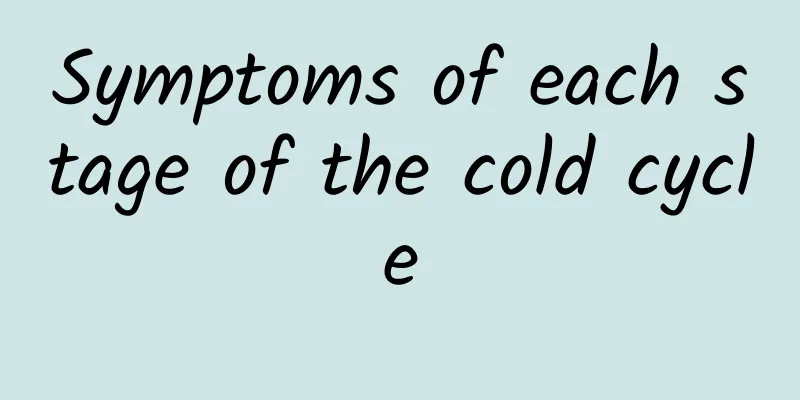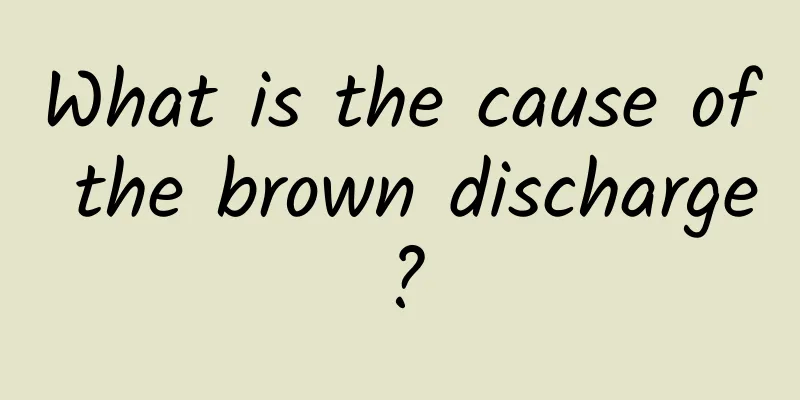Symptoms of each stage of the cold cycle

|
Colds have certain characteristics. For example, the symptoms will be different in the early stages of a cold and when the cold is about to get better. Generally, the early symptoms are often itching in the throat, sneezing, runny nose and nasal congestion, followed by clear nasal discharge. As the disease progresses, the nasal discharge will be thicker and cause pain in the throat, etc. Symptoms of each stage of the cold cycle The common cold has an acute onset and can generally be divided into several stages. Early symptoms include dry, itchy or burning throat, sneezing, nasal congestion, and runny nose. The runny nose starts out as clear water and becomes thicker after 2 to 3 days. Mid-term symptoms may be accompanied by sore throat. In the rapid recovery stage, there is generally no fever or systemic symptoms, or only a low-grade fever and headache. It usually takes 5 to 7 days to recover. Characteristics of a cold 1. 90% of colds are caused by viruses, and only 10% are caused by bacteria. More than 90% of cold pathogens are viruses. There are many types of viruses that cause colds, of which rhinoviruses account for more than 50%, and there are also influenza viruses, parainfluenza viruses, coronaviruses, coxsackie viruses, etc. Bacterial infections account for only about 10%. Since antibiotics are ineffective against viruses, only 10% of colds require treatment with antibiotics. 2. White blood cell count can determine which type of infection How to determine whether it is a viral cold or a bacterial cold? After catching a cold, go to the hospital for a routine blood test first. If the white blood cell count is found to be significantly higher than normal during a routine blood test, it means that there is a bacterial infection and antibiotics are needed for treatment. In viral infections, the white blood cell count is often low. 3. When the body temperature rises to 38°C, the virus cannot reproduce Increased body temperature is often a symptom of discomfort in most cold patients. What is less known is that the process of fever is actually the process of the body fighting against the virus. Viruses are very sensitive to temperature. When the body temperature rises to 38°C, the virus can no longer reproduce or form new viruses. A body temperature of 38°C is relatively bearable for most people, and this temperature is conducive to the formation of antibodies. If a child's fever reaches 38°C, and you rush to use antipyretics to force the temperature down, the virus will continue to multiply and the course of the disease will be prolonged. Antipyretics are only needed when the body temperature rises to 38.5℃. 4. Colds are most contagious from the first 2 days to the last 3 days If the body is infected with the cold virus, it is contagious 2 days before the onset of cold symptoms. The period from 2 days before a cold to 3 days after a cold is when the virus is most contagious. Therefore, it is best not to go to crowded and poorly ventilated places in winter. |
<<: What should I do if my cold hasn't healed for a week?
>>: How to drink Angelica and Astragalus to replenish qi and blood
Recommend
How to treat low sexual desire in men
Low male sexual desire is quite common in life. T...
What are the effects and functions of Magnolia officinalis
Many diseases in life can be alleviated by Chines...
Causes of a slow heart rate
Everyone's heart rate is generally different,...
What to do if hypothyroidism and hair loss are severe
Hypothyroidism is a hypothyroidism, a relatively ...
Is it good to drink red bean soup on an empty stomach?
Red beans are a common type of legume in daily li...
Will strawberry nose heal on its own?
Strawberry nose mainly refers to some hardened oi...
What to do if the first cervical vertebra is protruding
The cervical vertebra is composed of many joints....
Is long-term consumption of Houttuynia cordata harmful to the body?
Everyone has seen Houttuynia cordata in daily lif...
Pain near left shoulder blade
If you experience pain near the left shoulder bla...
What are the traditional Chinese medicines that can nourish the kidney and strengthen the spleen?
As we all know, Chinese medicine attaches great i...
What to do if your teeth are not aligned properly
The quality of teeth can affect the overall beaut...
Why do we need to supplement calcium with vitamin D?
Calcium and vitamin D are inseparable from our hu...
Artificial insemination conditions
Everyone should have some understanding of artifi...
Sticky secretions from the glans penis
If a man's glans secretes mucus, he should pa...
What to do if you feel dizzy after having blood drawn
After the blood was drawn, the patient experience...









